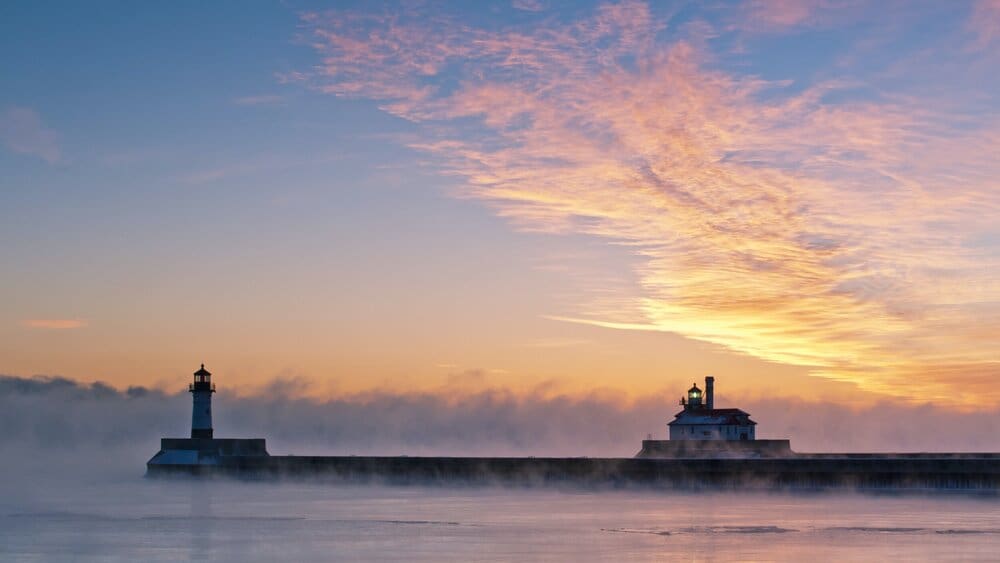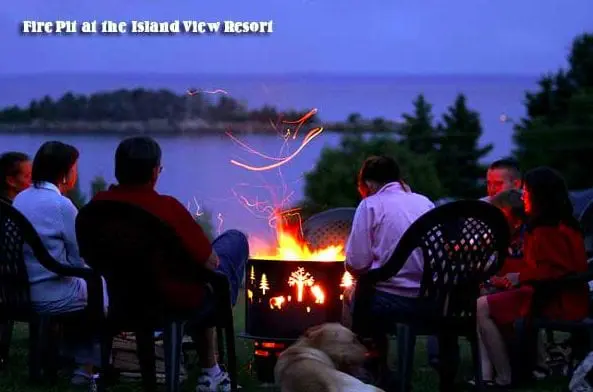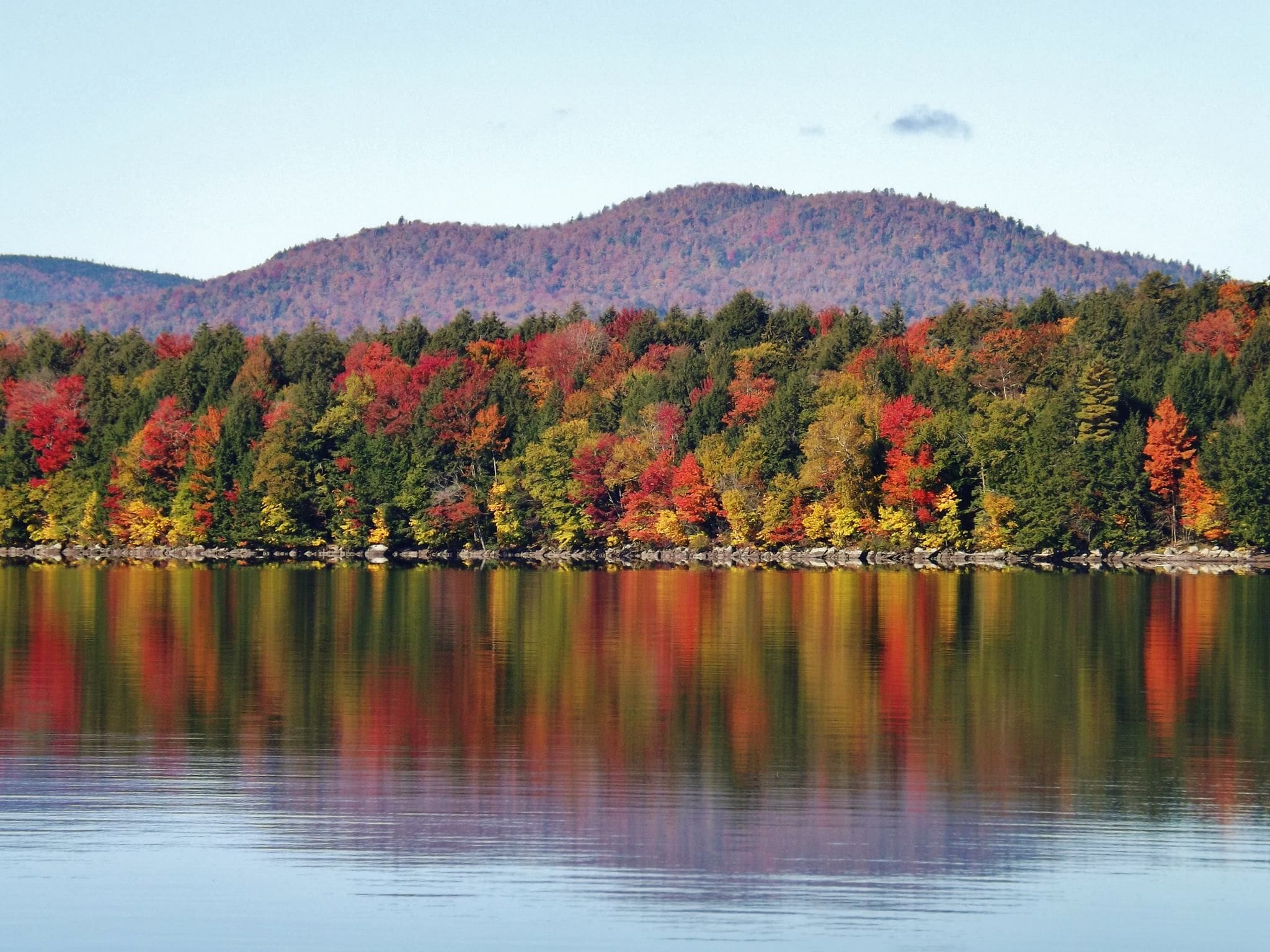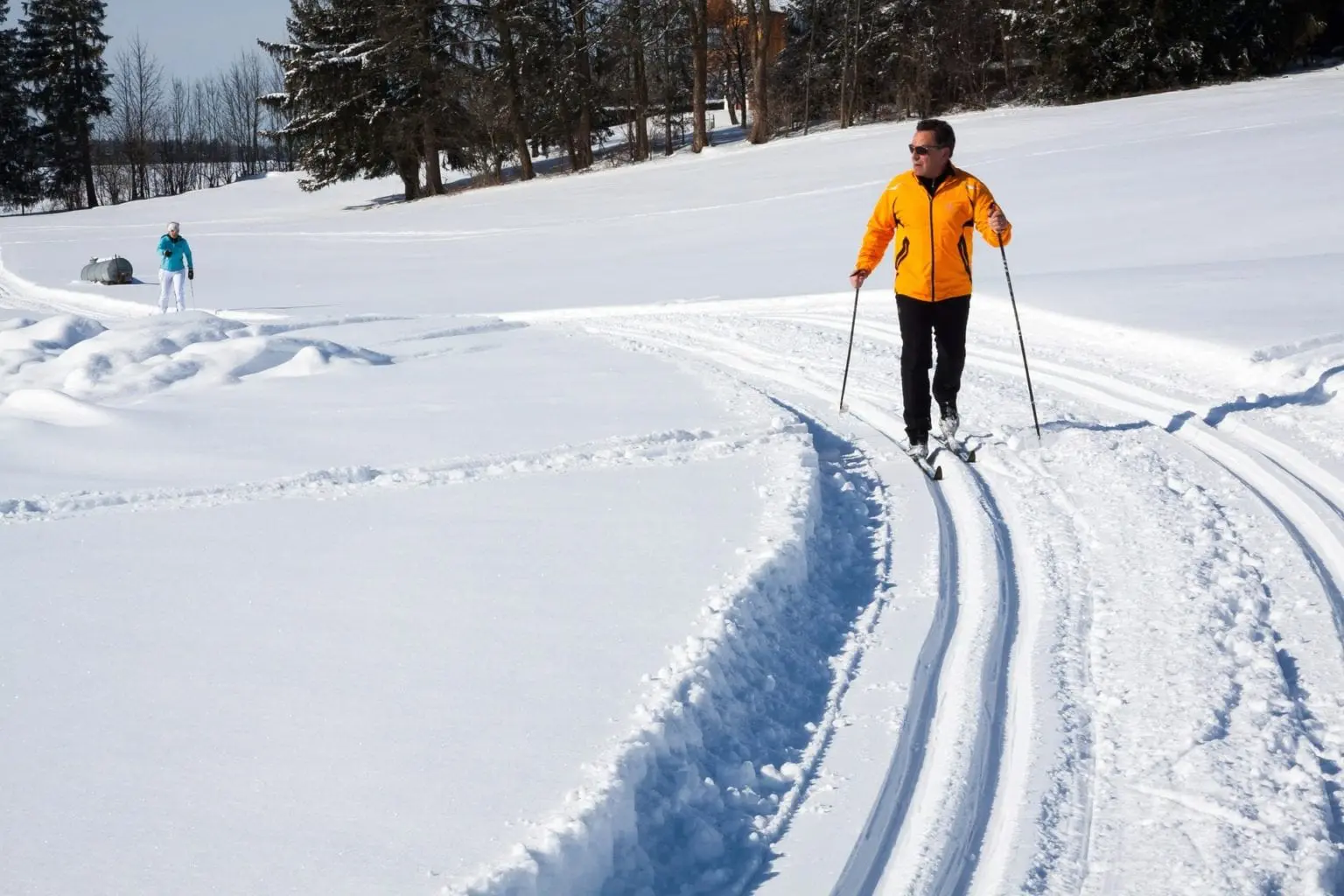AUGUST, 2019
By Paul von Goertz, KRHCC Board Member
The Knife River depot you will see evolve will be as historically accurate in appearance as in 1914, based on the reference photo you see here and original drawings.
The first photo is the Knife River depot as it appeared in about 1914. As railroad ridership decreased, the women’s waiting room, which comprised about the left third of the depot was removed and combined with the men’s.
The depot agent’s “bay” (bump-out) will be returned to where it was when the depot was built in 1887, originally to serve Lester Park which at that time was a long way from downtown Duluth. But with declining passengers caused by streetcar competition, and increased rail traffic through Knife River, it was moved by two flatcars with cranes to Knife River in December of 1899.
The drawing to the right is the original drawing of the Lester River Depot, later Knife River depot, it shows a touch of architectural flare with a peaked roof over the depot agent’s bay.
The photo to the right shows the reconstruction to date (August 27th), you can see the bay about center of the building, with the roof peak above it partially framed. The original footprint of the bay was in the concrete surrounding the building, so we know exactly where it was. The bay was necessary so the depot agent had a clear site line down the right-of-way left and right.
The original siding on the north and east walls will be retained with much thanks to Kris Olson. She spent many hours tirelessly scrapping off old paint while dodging wasps. Siding for the other walls was specially milled to match the original. The roof will remain red, but roofing will be maintenance-free steel rather than shingles.
Building sides will be painted in original gray with windows trimmed in green, also original color. Windows are being custom made to replicate the original. Each window costs $1,000 and we need nine. To date three windows have been purchased by families wishing to honor loved ones. Will we meet our goal of all having all nine purchased and installed by Julebyen?!!.
TODD LINDAHL – KRHCC “CZAR OF HISTORICAL ACCURACY”
The KRHCC is very fortunate to have board member Todd Lindahl as “Czar of Historical Accuracy.” Every item removed from the depot that may have any historical significance is run past Todd. So far he has identified the jobs of just about all depot employees who wrote graffiti on depot walls and signed their words. Todd also identified the approximate time period a whiskey bottle was consumed and dropped between wall studs (determined by state liquor control stamps). Not only is Todd the KRHCC’s Historical Accuracy Czar, but an active hands-on volunteer, shown here scraping paint from depot sides.
Todd is way too modest to talk about his credentials to be Historical Accuracy Czar, but a little poking round reveals that he:
- Has been a student of historical archaeology, preservation and documentation for 44 years, starting as a 17-year-old teenager;
- Worked with the Lake County Highway Department survey crew and in that capacity learned to identify and document glacial features and earthen materials;
- For 46 years has engaged in historical preservation and restoration of railroad depots, historic rail cars and steam locomotives;
- Has given public historical presentations over 24 years, and for the last 14 has been averaging about one a month. Todd figures he has given more than 200 presentations, all free of charge.
- He has both lectured and provided in-field training for archaeology and anthropology students at UMD, UWS, St. Scholastica and Lake Superior College.
- Worked with the State of Minnesota’s Archaeologist’s office on a three year archaeological excavation, which resulted in his book “The Rise & Fall of Whiskey Row.”
- Contributed to many books written by others and has written articles for many magazines, newspapers, and society newsletters.
DEPOT CREW ADDS “RAIN DAY” TO WORK WEEK
With the arrival of cooler days and realization that the building season is limited, the depot work crew has added Thursday as “rain day.” Up until now, the workweek has been Mon./Tues./Wed. mornings. In order to keep the workweek at three half days, the Thursday “rain day” has been added. It holds too for a holiday that falls on a Mon./Tues./Wed.
The most import work to be completed yet this year is the roofing. The OSB roof decking is certified against weather for 30 days, so we need to get it covered with steel by mid-September. We also need to move CRUSADER II to Center property. The KR Marina agreed to store the boat at no charge until we could find a site for it, which we now have. They have graciously stored the boat for nearly three years. They have also agreed to move the boat to the Center site at no cost. Thank you KR Marina!
We have also learned that the siding to the NSSR right-of-way and the spur to the B&B business car parking area may happen as soon as next year, should the NSSR’s financial plan come together.
In anticipation of this potentially happening, we will need to move the freight car building north from the right-a-way about 20 feet yet this fall. Space for the siding and spur are all in the conditions of our lease with the Regional Rail Authority.
Did you know…?
From 1966 – 1970 nearly the entire crew of the historic steam tug EDNA G. was from Knife River. Adolph Ojard was Captain and Ivar Pederson Relief Captain, Harvey Ojard Chief Engineer, Alvin Skadberg Fireman/deck hand, and Norman “Hack” Lind linesman. Two others comprised the crew, both from Two Harbors.
KNIFE RIVER REBUILDING ITS “GAS BOATS”
While the KR community has been focused on rebuilding the depot and restoring CRUSADER, several KR men have been rebuilding three of KR’s “gas boats” that have long been part of KR’s heritage.
Point of clarification: the term “Gas Boat” refers to open round bottom “skiff” up to about 25 feet that are a variation on the “Mackinaw” fishing boats that evolved at the opposite end of the lake. The Mackinaws were very seaworthy and powered by sail. Once gas engines became available, the term “Mackinaw” could no longer apply to boats of the Mackinaw design and so to distinguish from the sail-powered Mackinaw, the term “gas boat” began to be used.
Further definition: term “fish tug” applies to commercial fishing boats large enough to have an enclosed cabin.
Two of the three KR gas boats have been restored, while the third is under restoration.
STAR is 20’ 2” in length and was built in 1934 by the Kivala family in Mohawk, MI, for fishing the offshore waters of Isle Royale. Its design reflects the conditions for fishing in rough water. It is a double-ender (pointed stern as well as bow) with high bow and stern. It was ready for the burn pile when your editor bought it for $1 from its “steward” in Grand Marais in 2013.
KR boatwright Larry Ronning and Mike Ojard collaborated on the rebuild plan. Larry also provided the steam bending equipment and hands-on lessons in steam bending. Mike Ojard rebuilt a 1955 Gray Marine Phantom (50 hp) for repowering and also provided the drive and rudder. You editor planked and decked it. Last September, after a five-year rebuild, it was launched at the KR marina with the surviving wives of three long-time KR commercial fishermen christening it. Over course of STAR’S time in Knife River, it fished for five different KR fishing families.
IVAR JOHN is 20 feet in length and was built in 1948 by the Hill brothers of Larsmont for Carl Erickson of KR. A 2- cylinder Red Wing moved it along at about 8 mph at 800 rpm. Carl’s son-in-law, Ivar Pederson, ended up owning it and then it went through several hands until Mike Ojard saw it in a field in Clover Valley. Mike and cousin, Rich Ojard, became partners in the boat with Mike restoring the original Red Wing which was still in KR, and Rich bringing it back to sailing condition.
Rich took over the IVAR when Mike started Heritage Marine, a tugboat company now with a fleet of four tugs. In the spring of 2017, it became readily apparent IVAR JOHN needed serious repairs – a new stem and keel. Rich and Larry Ronning collaborated on a structural rebuild plan and your editor carried it out, with Rich completing the interior carpentry and repowering IVAR with a 12 hp Volvo Penta diesel. IVAR was relaunched in early July and is good for many more years.
JACKIE was also built by the Hill family and is similar in appearance to IVAR JOHN. Rich Ojard also owns JACKIE. Jackie has a 1952 Red Wing 4-cylinder engine capable of 40 hp. It was owned for many years by Hans Ojard, Rich and Mike’s uncle, and named after Hans’s wife. Hans’s son, Gary, became owner after Hans passed away and was its steward for many years before cousin Rich acquired it in 2016.
JACKIE is in remarkable good shape and will be made ship-shape by Richard, and perhaps repowered as well. KR’s commercial fishing heritage and its gas boats are intertwined and are an integral part of the town’s colorful history.
It should be noted that in addition to the persons mentioned in this story, that many others from KR helped in restoring these boats from locating, rescuing and transporting to KR, steam bending (which can require up to six people) and to flipping the boats over for hull work and then up righting again (eight to ten people). “It takes a village to restore a rotten boat!”
Did you know…?
In 2015, the Knife River Julebyen received international recognition for its authenticity as a Scandinavia celebration of Christmas when Norwegian National Broadcasting (counterpart to our PBS) sent a news crew to Knife River to capture our interpretation. The five-minute feature that resulted was aired twice a week later in Norway to approximately 3.5 million people. Later we found out that the person who produced the program was one of Norway’s most popular television personalities.
Julebyen has experienced dramatic grown since its inaugural in 2013 when an estimated 750 attended, in 2018 the estimated attendance was ten times that number.
While it takes more than 200 volunteers to host Julebyen, three stand out. Anne Skadberg (OK, and Chris, too) who brought the concept back to KR after experiencing Julebyen in Norway (Anne also is in charge of all craft items made and sold at Julebyen); Carol Carlson who fell in love with the idea and has chaired it ever since: and Scott Jasperson who heads all aspects of operations, a full time job for about five weeks in November and early December.
Julebyen 2019 Is December 6-8.
More things learned along the way…
To more current history, Knife River’s own Mike Ojard was the Minnesota state and Midwest wrist-wrestling (arm wrestling) champ and never trained a day in his life, other than lifting an occasional engine block.
He was Minnesota wrist-wrestling champ for six consecutive years (1975-81) in three classes: 220 pound, 240 pound and super heavy weight.
He competed in the Midwest National Open and won five years in a row. He entered the World completion while still recovering from an arm injury unrelated to wrist wrestling, but lost in the second round.
Now 73 years old, Mike still has the build of a wrist wrestler. Mike Ojard demonstrates the intimidating stare used at wrist-wrestling competitions. Actually, this is the way he always looks at your editor most of the time (who took this picture).
THE REAL EMILY OF “EMILY’S”
There was a real Emily, who emigrated from Norway at age 12, by herself, to live with her aunt. She felt Knife River needed a general store, so she and husband, Sig Erickson, built it in the late 1920s. They gradually added living quarters in the back and from there began serving hungry north woods travelers with the Scandinavian hospitality she brought from Norway.
In 1988 Steve and Carol Carlson, bought what was then Jackson’s General store, renamed it Emily’s and began serving deli foods, while turning the upstairs living area into a B&B. Carol is Emily’s granddaughter.
The Emily’s menu was filled with many of Emily’s original recipes as well as enticing items added by Carol and Steve like “Smoked Fish Spread with Crostini” with a suggestion of a Gallo of Sonoma Chardonnay. Soups like Lake Superior Fish Chowder, Tomato Dill and Emily’s chili – “This chili is so hot, it must have come from southern Sweden”.
A smorgasbord of sandwiches was served with tomato, red onion, lettuce or alfalfa sprouts, Colby, Swiss or cheddar cheese, mayonnaise or mustard on fresh baked bread. (At this point, your editor needs to take a break for a sandwich.)
Emily’s hosted a Friday night fish boil that was very popular, with what remained becoming Saturday’s fish chowder. Your editor’s favorite!
Emily’s offered free delivery (of sorts) proclaiming “Emily’s Delivers! But, if we are not there in a half hour, we’re not coming.” Catering was another service of Emily’s and was very popular with those hosting Knife River and area events.
Steve and Carol sold the business in 2004, and Emily’s went through several owners and/or operators, most recently Duluth businessmen Sanford Hoff and Alex Giuliani.
This past spring Hoff acknowledged in an email to your editor that because of intense competition and continuing problems with staffing, Emily’s would not open this year, and that he had sold his interest to Giuliani. He did not rule out the possibility – that with market changes – it could someday reopen as a restaurant, but for the time being Giuliani was exploring residential options. As of date, Giuliani has not announced his plans for the building.
And so who is the 86-year old volunteer mentioned in the July newsletter?
John Safstrom, of course! Four people got the correct answer and all declined to collect their prize of a pound of square (cut) nails which they could pull themselves from the depot.
John is a pretty busy guy, but we did catch him for just this instant to get his picture!
Your comments and suggestions for this monthly emailed newsletter are always welcome. Email to: info@krhcc.org If you have family or friends you feel may enjoy receiving it, please send their email addresses to same address above.





